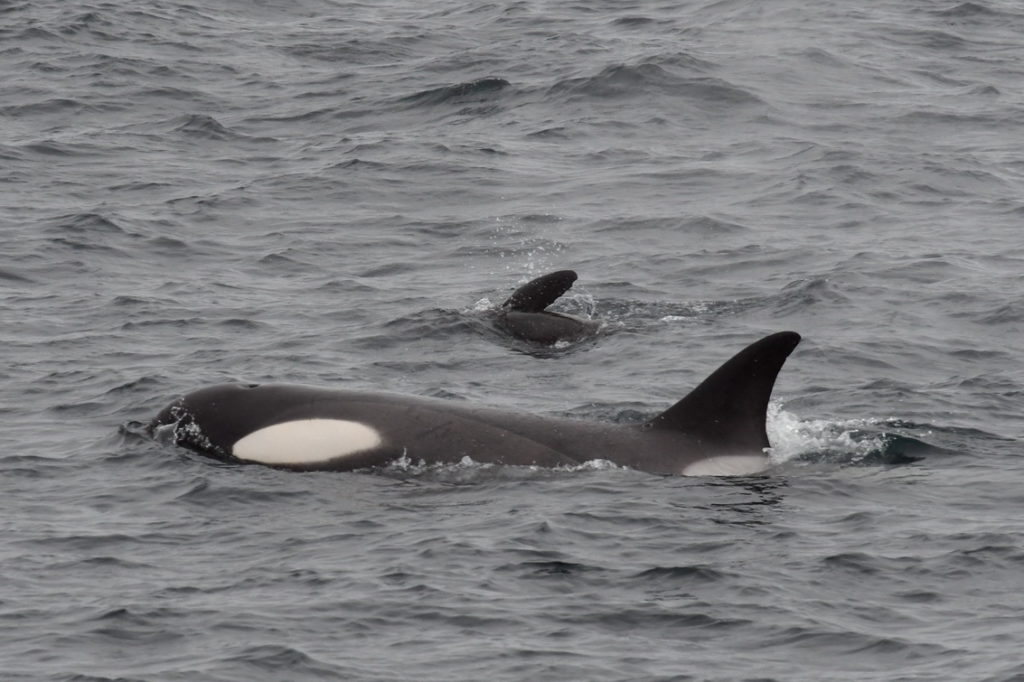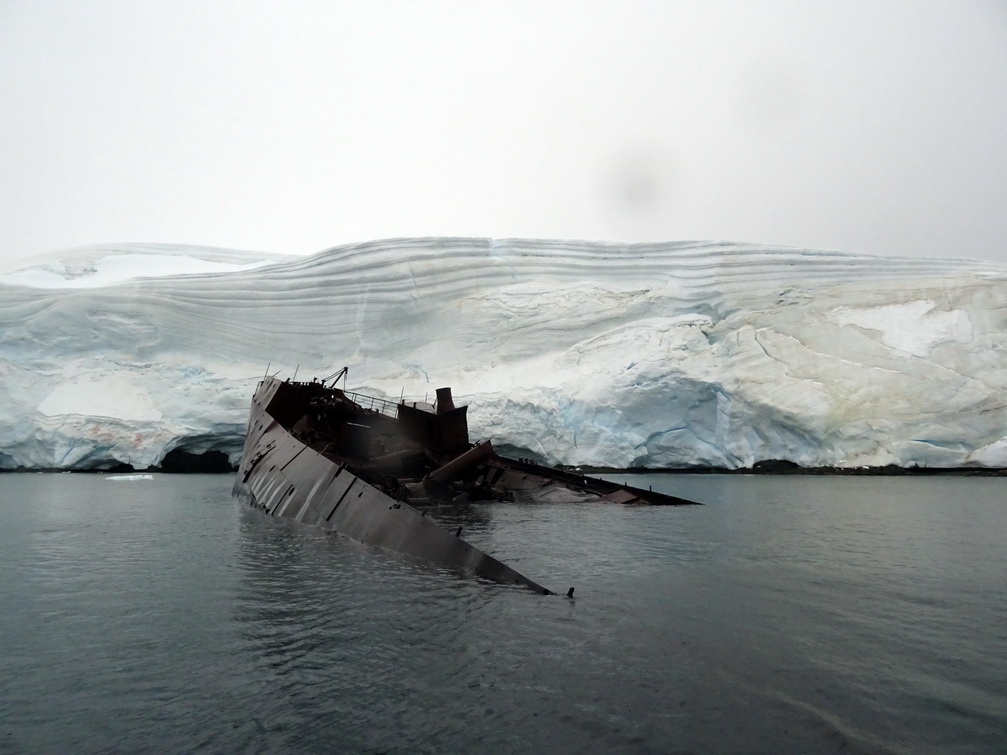First day in Antarctica proper – AMAZING! 20 March 2017
When I woke early this morning and looked out the little porthole, I was greeted with my first taste of Antarctica, ice! In an earlier lecture, we were told that no matter where we look, we will never find more ice than in Antarctica. As the morning went on, we saw more and more ice around us until we finally started seeing proper icebergs. With so much ice around I am very glad to have such an experienced crew navigating our boat.

Just as we were finishing our breakfast, the expedition leader made an intercom announcement that there had been humpback whales sighted off the ship. They had been spotted by our student observer team who were on effort and keeping a lookout for marine mammals. Since these were the first humpback whales sighted on this trip everyone, students and passengers included, got really excited and hurried out to see if we could catch a glimpse of them. We came out on the bridge and saw an amazing sight, icebergs of different sizes floating on the water, giant glaciers on land next to us and humpbacks everywhere in between! I could look in any direction and see a blow from a humpback or see a tail fluke coming out of the water. It was an amazing experience.

Not long after we had first spotted the humpback whales the boat anchored close to Cuverville Island where we would get to do our first expedition on land. Being the “scientists in training” that we are, we had work to do before we could land on the island. We got on a zodiac (sturdy inflatable boat) and went out into the bay. Here we stopped at a few points to take CTD and Secchi disk measurements. A CTD measures the temperature and salinity of the water. A Secchi disk measures the transparency of the water (the less transparent the water, the more “stuff” such as: zooplankton, algae, sediments and other particles there are). Whist we were taking measurements we were surrounded by humpback whales, some were so close we were concerned that they might accidentally tip our boat! A little distracting when we are supposed to be working…..

After we finished our measurements, we got to set foot on Cuverville Island which is inhabited by Gentoo penguins. Walking on this island was rather difficult because we had to give penguins right of way. So whilst waking along the shore we had to avoid getting run over by penguins and accidentally stepping on the well camouflaged (and feisty) fur seals.

Some of the young penguins on the island were really curious. A few walked up to us and stare into the cameras, some even giving the lens a peck. The funniest penguin walked up to Michael and proceeded to bite his pants, probably determined to bite a hole in them.

Back on the boat for lunch, the dining room was filled with excited voices. Everyone was talking about what we had just experienced. We all agreed that it had been the best day so far, yet it was only 1 pm in the afternoon. Many of us probably thought the day couldn’t get much better, but we could not have been more wrong. Not long after lunch was finished Lars and Sonja, while supporting the observers on their lookout, spotted several large fins ahead of the ship… A.pod of orcas! The subsequent intercom announcement by expedition leader Beau led to people streaming out onto the decks to see the orcas (killer whales). Some, myself included, didn’t even give themselves enough time to put on their jackets. However, a little (or rather a lot) of cold was a small price to pay to see these beautiful animals! The ship cruised around the area for a while allowing for all of us to get good looks, and some even got amazing pictures of the orcas. Interestingly there were fur seals swimming amongst the pod of orcas. Now normally this might mean feeding time for the orcas and the fur seals trying to flee, but this didn’t seem to be the case. The fur seals appeared to be actively following the orcas, and seeking to interact with them, a rather strange phenomenon that isn’t seen very often.

After all the excitement with the orcas we set off to the next destination where we got to cruise around on zodiacs to look at a shipwreck. The ship, Govenoren, was once a Norwegian cargo ship transporting whale oil. However, shortly after picking up the whale oil the ship caught fire. The captain on board decided that the cargo was worth more than the ship itself and made the decision to run the ship aground destroying the ship, but saving the cargo. This happened little more than a 100 years ago, yet the ship can still be seen partially sunk with the bow sticking out of the water. Because it is so cold and dry in Antarctica things take longer to decay, so a bit away from the wreck a few wooden lifeboats can be seen. Presumably the lifeboats the sailors used to abandon the Govenoren and save the whale oil.

I think everyone agrees that the first day in Antarctica was certainly the best day of the trip so far! Ticking off many of the things people wanted to see on this trip: Penguins, humpback whales, killer whales, icebergs and glaciers……. Today went beyond our expectations and will certainly set the bar very high for the rest of the trip…..
Written by Rebecca Vidin


Wow, so jealus and happy for you to experience all of this!
What an experience - out of this world - bet you all want to stay forever!